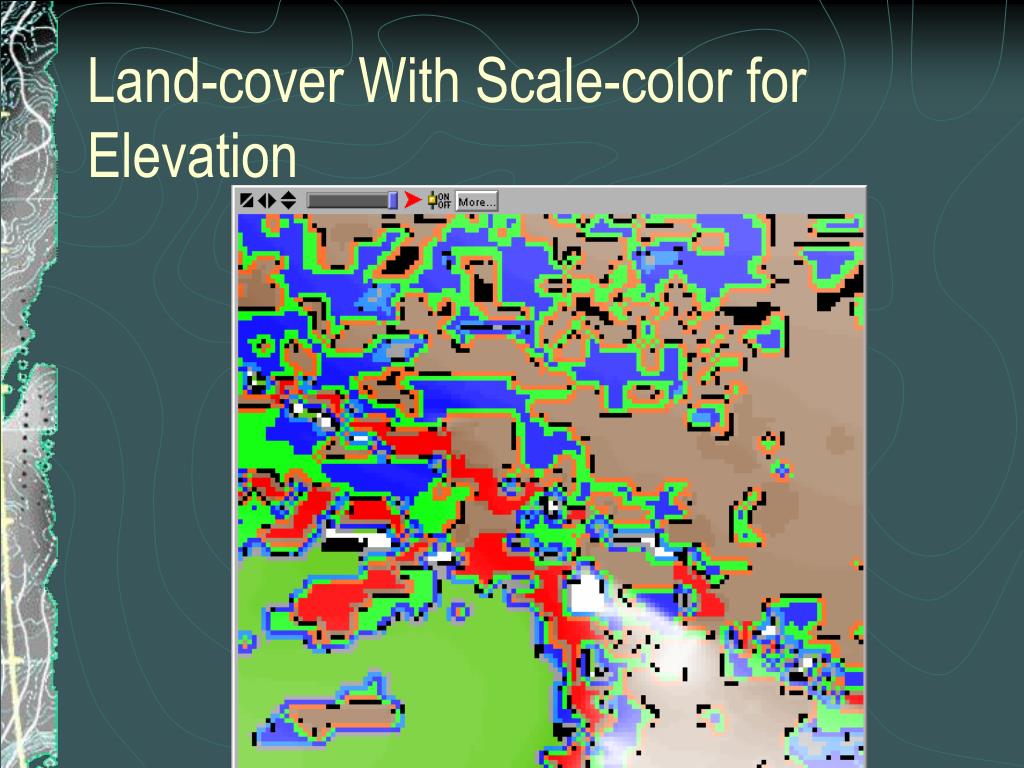

Papert was largely inspired by the constructivism of Jean Pigaet with whom he had worked several years before. This language was created in 1967 by a collaborative effort between Wallace Feurzeig and Seymour Papert. Īgent-based Spatial Simulation with NetLogo 1 This stems both from its graphical interface and the programming language used,Ĭhapter written by Frédéric A MBLARD, Eric D AUDÉ, Benoît G AUDOU, Arnaud G RIGNARD, Guillaume H UTZLER, Christophe L ANG, Nicolas M ARILLEAU, Jean-Marc N ICOD, David S HEEREN and Patrick TAILLANDIER. A little history When NetLogo is presented in workshops, the first advantage expressed is that of how easy it is to pick up and use. The history of Logo allows for a partial understanding of NetLogo’s philosophy. It is the latter that has had the greatest influence on the programming language used by NetLogo, known as Logo3, which was itself inspired by the Lisp programming language family.
#Netlogo scale color for mac#
Developed at the Center for Connected Learning, the software currently draws from StarLogoT1, which is available for Mac OSX, and StarLogo2, which was developed at MIT’s Media Laboratory. Introduction NetLogo is a programming environment which allows for the construction and exploration of agent-based models. This work is licensed under a Creative Commons Attribution 3.3.1. Game strategies and different topologies (NetLogo)įind your way around on Kleinberg's small world lattice Play the iterated prisoners'' dilemma game on different topologies (model created by Ed Baskerville): Graph coloring in a small world topology (NetLogo) Each nodes tries to pick a different color than each of its neighbors. Play a game of coordination on a small world topology. Percolation on a square lattice (NetLogo)

Is there a critical threshold for the percentage of active nodes at which the lattice percolates (i.e.

Testing the resilience of a Gnutella network (Guess) See how the Gnutella peer-to-peer filesharing network holds up to random node failure and targeted attack on the highest degree nodes. This demo was written by Patrick Jordan based on the algorithm by Gunes Erkan and Dragomir Radev: Use LexRank, a PageRank based algorithm, to summarize text. Experiment by varying the teleportation probability in applying PageRank to a small network. Having high PageRank means that not only do others link to you, but those others are themselves linked to. Choose nodes in a small social network such that your opinion wins out. This model is set up as a two-player game. Sometimes whether an opinion diffuses or not depends on the initial location where it is formed, and also whether one is dealing with simple contagion (each of your friends "infects" you with constant probability at each time point) or complex contagion (you need to hear it from at least two friends to adopt an opinion). See how the tendency of new nodes to attach to well connected nodes influences the rate of spread:ĭiffusion in randomly and preferentially grown networks (NetLogo)įind out how random rewiring affects the probability that an infection persists in the network using an SIS (susceptible-infected-susceptible) model. Next, take a growing network, with and without preferential attachment. Start with a simple Erdos-Renyi random graph, and figure out how the density of the network affects the speed of diffusion.ĭiffusion in an Erdos Renyi graph (NetLogo) Opinion formation on a toy network (NetLogo) Use the Girvan-Newman betweenness clustering algorithm to discover community structure in the linking patterns of political blogs.įind out how community structure can affect opinion formation.

Random and preferential attachment NetLogo model Vary this preference and see the effect on the growing network. It can do this purely at random, or it may prefer nodes who have more connections. Giant Component Model (model is part of the standard NetLogo models library)Įach node that joins the network has to decide what other node(s) it will attach to. Is there a critical average degree at which a giant component emerges? Vary the average degree in the classic Erdos-Renyi random graph model. See how different amounts of random rewiring affect the shortest path and clustering coefficient of the network: NetLearn: Interactive demonstrations of network conceptsĮxperiment with the Watts-Strogatz small world model.


 0 kommentar(er)
0 kommentar(er)
